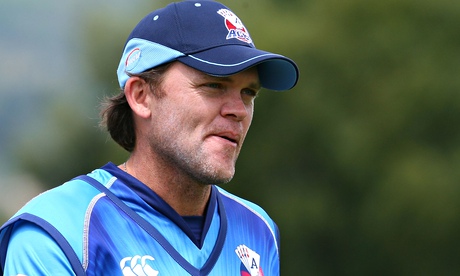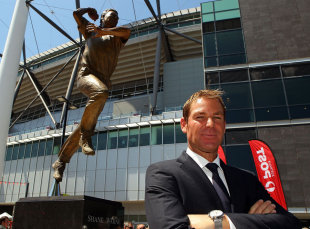Shiv Visvanathan in The Hindu
What secularism did was it enforced oppositions in a way that the middle class felt apologetic and unconfident about its beliefs, its perspectives. Secularism was portrayed as an upwardly mobile, drawing room discourse they were inept at
On May 17, Narendra Modi revisited Varanasi to witness a pooja performed at the Kashi Vishwanath temple. After the ritual at the temple, he moved to Dashashwamedh ghat where an aarti was performed along the river. The aartiwas more than a spectacle. As a ritual, it echoed the great traditions of a city, as a performance it was riveting. As the event was relayed on TV, people messaged requesting that the event be shown in full, without commentary. Others claimed that this was the first time such a ritual was shown openly. With Mr. Modi around, the message claimed “We don’t need to be ashamed of our religion. This could not have happened earlier.”
At first the message irritated me and then made me thoughtful. A colleague of mine added, “You English speaking secularists have been utterly coercive, making the majority feel ashamed of what was natural.” The comment, though brutal and devastating, was fair. I realised at that moment that liberals like myself may be guilty of something deeper.
At the same time moment, some Leftists were downloading a complete set of National Council of Educational Research and Training (NCERT) textbooks fearing that the advent of Mr. Modi may lead to the withdrawal of these books. The panic of some academics made them sound paranoid and brittle, positing a period of McCarthyism in India. It also brought into mind that both Right and Left have appealed to the state to determine what was correct history. With the advent of the Right, there is now a feeling that history will become another revolving door regime where the official and statist masquerade as the truth.
Secularism as a weapon
I am raising both sets of fear to understand why Left liberals failed to understand this election. Mr. Modi understood the anxieties of the middle class more acutely than the intellectuals. The Left intellectuals and their liberal siblings behaved as a club, snobbish about secularism, treating religion not as a way of life but as a superstition. It was this same group that tried to inject the idea of the scientific temper into the constitutions as if it would create immunity against religious fears and superstitions. By overemphasising secularism, they created an empty domain, a coercive milieu where ordinary people practising religion were seen as lesser orders of being.
I am raising both sets of fear to understand why Left liberals failed to understand this election. Mr. Modi understood the anxieties of the middle class more acutely than the intellectuals. The Left intellectuals and their liberal siblings behaved as a club, snobbish about secularism, treating religion not as a way of life but as a superstition. It was this same group that tried to inject the idea of the scientific temper into the constitutions as if it would create immunity against religious fears and superstitions. By overemphasising secularism, they created an empty domain, a coercive milieu where ordinary people practising religion were seen as lesser orders of being.
Secularism became a form of political correctness but sadly, in electoral India it became an invidious weapon. The regime used to placate minorities electorally, violating the majoritarian sense of fairness. In the choice between the parochialism of ethnicity and the secularism of citizenship, they veered toward ethnicity. It was a strange struggle between secularism as a form of piety or political correctness and people’s sense of religiosity, of the cosmic way religion impregnated the everydayness of their lives. The majority felt coerced by secular correctness which they saw either as empty or meaningless. Yet, they correctly felt that their syncretism was a better answer than secularism. Secularism gave one three options. The first was the separation from Church and State. This separation meant an equal distance from all religions or equal involvement in all religions. There was a sense that the constitution could uphold the first but as civilisations, as communities we were syncretic and conversational. One did not need a parliament of religions to be dialogic. Indian religions were perpetually dialogic. The dialogue of medical systems where practitioners compared their theologies, their theories and their therapies was one outstanding and constructive example.
There was a secondary separation between science and religion in the secular discourse. Yet oddly, it was Christianity that was continuously at odds with science while the great religions were always open to the sciences. Even this created a form of coerciveness, where even scientists open to religion or ritual were asked to distance themselves from it. The fuss made about a scientist coming to office after Rahukalam or even discouraging them from associating themselves with a godman like Sai Baba was like a tantrum. There is a sense of snobbery and poetry but more, there is an illiteracy here because religion, especially Christianity shaped the cosmologies of science. In many ways, Ecology is an attempt to reshape and reinvent that legacy.
Tapping into a ‘repression’
What secularism did was it enforced oppositions in a way that the middle class felt apologetic and unconfident about its beliefs, its perspectives. Secularism was portrayed as an upwardly mobile, drawing room discourse they were inept at. Secularism thus became a repression of the middle class. For the secularist, religion per se was taboo, permissible only when taught in a liberal arts or humanities class as poetry or metaphor. The secularist misunderstood religion and by creating a scientific piety, equated the religious with the communal. At one stroke a whole majority became ill at ease within its world views.
What secularism did was it enforced oppositions in a way that the middle class felt apologetic and unconfident about its beliefs, its perspectives. Secularism was portrayed as an upwardly mobile, drawing room discourse they were inept at. Secularism thus became a repression of the middle class. For the secularist, religion per se was taboo, permissible only when taught in a liberal arts or humanities class as poetry or metaphor. The secularist misunderstood religion and by creating a scientific piety, equated the religious with the communal. At one stroke a whole majority became ill at ease within its world views.
Narendra Modi sensed this unease, showed it was alienating and nursed that alienation. He turned the tables by showing secularism — rather than being a piety or a propriety — was a hypocrisy, or was becoming a staged unfairness which treated minority violations as superior to majoritarian prejudices. He showed that liberal secularism had become an Orwellian club where some prejudices were more equal than others. As the catchment area of the sullen, the coerced, and the repressed became huge, he had a middle class ready to battle the snobbery of the second rate Nehruvian elite. One sensitive case was conversion. The activism of Hindutva groups was treated as sinister but the fundamentalism of other religions was often treated as benign and as a minoritarian privilege. There was a failure of objectivity and fairness and the infelicitous term pseudo-secularism acquired a potency of its own.
While secularism was a modern theory, it was impatient in understanding the processes of being modern. Ours is a society where religion is simultaneously cosmology, ecology, ritual and metaphor. Most of us think and breathe through it. I remember a time when the epidemics of Ganesha statues were drinking milk. Hundreds of believers went to watch the phenomena and came away convinced. I remember talking to an office colleague who returned thrilled at what she had seen. I laughed cynically. She looked quietly and said, “I believe, I have faith, I saw it. You have no faith so why should the Murtitalk to you.” I realised that she felt that I was deprived. She added that the mahant of a temple where the statue had not drank milk had gone into exile and meditation to make up for his inadequacy. I realised at that moment that a lecture on hygroscopy or capillary action (the scientific explanations) would have been inadequate. I could not call her illiterate or superstitious. It was a struggle about different meanings, a juxtaposition of world views where she felt her religion gave her a meaning that my science could not. I was reminded that the great Danish physicist, Niels Bohr had a horseshoe nailed to his door. When Bohr was questioned about it, he commented that it won’t hurt to be there. Bohr had created a Pascalian Wager, content that if the horseshoe brought luck it was a good wager, but equally content that if it was inert it did no harm. I wish I had replied in a similar form to my friend.
For a pluralism of encounters
I realise that in many places in Europe, there has been a disenchantment with religion. I have seen beautiful churches in Holland become post offices as the church confronted a sheer lack of attendance. But India faces no such problem and we have to be careful about transplanting mechanical histories.
I realise that in many places in Europe, there has been a disenchantment with religion. I have seen beautiful churches in Holland become post offices as the church confronted a sheer lack of attendance. But India faces no such problem and we have to be careful about transplanting mechanical histories.
Ours is a different culture and it has responded to religion, myth and ritual. The beauty of our science Congress is that it resembles a miniature Kumbh Mela. But more, our religions have never been against science and our state has to work a more pluralistic understanding of these encounters. Secularism cannot be empty space. It has to create a pluralism of encounters and allow for levels of reality and interpretation. Tolerance is a weak form of secularism. In confronting the election, we have to reinvent secularism not as an apologetic or disciplinary space but as a playful dialogue. Only then can we offer an alternative to the resentments that Mr. Modi has thrived on and mobilised. I take hope in the words of one of my favourite scientists, the Dalai Lama. When George Bush was waxing eloquent about Muslims, the Dalai Lama commented on George Bush by saying, “He brings out the Muslim in me.” I think that captures my secular ethic brilliantly and one hopes such insights become a part of our contentious democracy.






 TFT Issue: 16 May 2014
TFT Issue: 16 May 2014